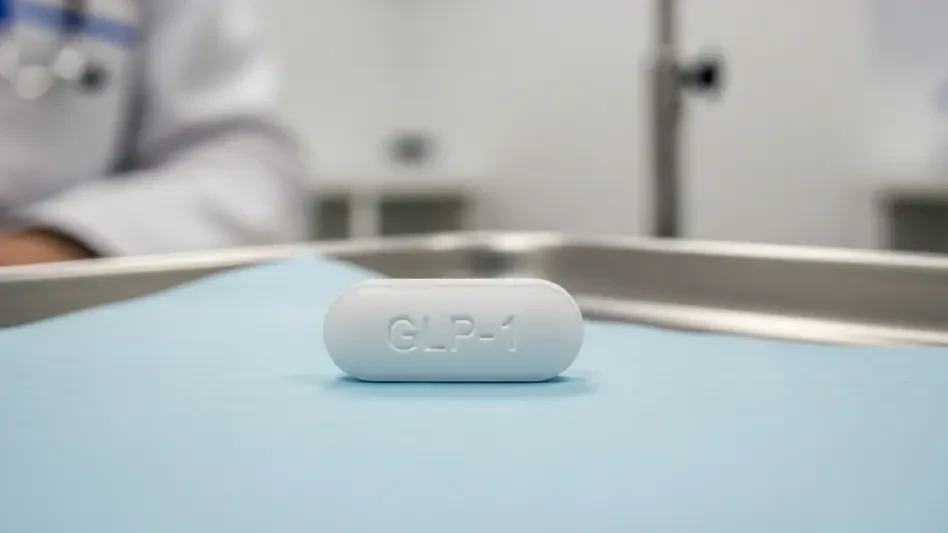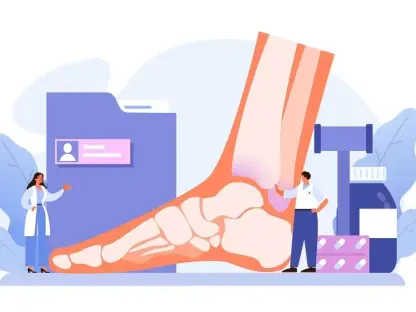What happens when a lifeline for millions of Americans battling obesity is suddenly yanked away by the very systems meant to protect their health? In a nation where over 40% of adults struggle with obesity, GLP-1 receptor agonists—medications like Ozempic and Mounjaro—have emerged as groundbreaking tools for weight loss, yet insurers are pulling back on coverage. As of this year, a growing number of insurers and employers are slashing coverage for these drugs when used for obesity, leaving patients stunned and advocates furious. This seismic shift in healthcare policy is not just a financial decision; it’s a battle over how society values treatment for a chronic condition that fuels heart disease, diabetes, and billions in medical costs.
The importance of this story lies in its far-reaching impact on public health and equity. Obesity isn’t merely a personal issue—it’s a systemic crisis, contributing to some of the most pressing health challenges in the U.S. When insurers limit access to proven treatments like GLP-1 drugs, which can cost between $936 and $1,349 monthly without coverage, they risk deepening health disparities and burdening the system with preventable complications. This controversy raises critical questions about cost versus care, and whether a condition affecting millions will continue to be sidelined by budget constraints. The stakes couldn’t be higher for patients, providers, and policymakers alike.
Why Life-Changing Obesity Drugs Are Slipping Away
The promise of GLP-1 drugs has been nothing short of transformative for many struggling with obesity. These medications, initially developed to manage diabetes, have shown remarkable results in helping patients shed significant weight, often when other methods fail. However, the staggering price tag has become a sticking point for insurers like Blue Cross Blue Shield of Massachusetts, who argue that covering these drugs for weight loss is unsustainable for smaller employers or certain plans.
This financial barrier has led to a wave of coverage rollbacks starting this year, with many plans restricting access or requiring additional opt-in costs for larger employers. The result is a patchwork system where access depends on employment size or plan specifics, creating frustration for those who see these drugs as their best chance at a healthier life. Patients are often left to navigate a maze of denials and appeals, unsure if they’ll ever regain access to a treatment that once seemed within reach.
The Obesity Epidemic and GLP-1 Breakthrough
Obesity stands as a towering public health challenge, linked to a host of severe conditions including cardiovascular issues and type 2 diabetes, while driving up healthcare spending to staggering levels. With two in five American adults affected, the urgency to address this epidemic has never been clearer. The ripple effects touch every corner of society, from individual well-being to economic burdens on medical systems.
GLP-1 drugs entered the scene as a beacon of hope, offering a scientifically backed solution that goes beyond traditional diet and exercise. Clinical studies have demonstrated their ability to help patients lose up to 20% of their body weight, a feat previously unimaginable for many. Yet, as insurers pull back on coverage for obesity indications—while often maintaining it for diabetes—the gap between medical innovation and accessibility widens, threatening to leave millions without a vital tool.
Unpacking the Coverage Crisis
The decision by insurers to limit GLP-1 coverage for obesity stems from a complex web of financial and policy challenges. Costs are a primary driver, with some plans citing the need to balance budgets against the rising demand for these expensive medications. For instance, a Business Group on Health survey reveals that while 99% of self-insured employers cover GLP-1s for diabetes, only 73% do so for obesity, highlighting a stark disparity in how these related conditions are prioritized.
Beyond private insurers, public programs like Medicare refuse to cover these drugs for weight loss, and certain state Medicaid plans are following suit with tightened restrictions. A potential policy expansion to address this gap has stalled, leaving a void for low-income and elderly patients. Meanwhile, health systems like RWJBarnabas Health and Ascension are joining the trend of rollbacks, signaling a broader shift that could reshape access to obesity care for years to come.
Hearing from Those Affected
The human toll of this coverage crisis comes alive through the voices of those directly impacted. Dr. Angela Fitch, a prominent obesity medicine specialist, has labeled the rollback as “akin to malpractice,” emphasizing the overwhelming evidence supporting GLP-1 effectiveness. Her frustration echoes the sentiments of countless physicians who see their patients’ progress halted by insurance decisions.
Advocates, such as Millicent Gorham from the EveryBODY Covered campaign, bring attention to the societal implications, arguing that denying coverage perpetuates stigma and discrimination, particularly for women with obesity. Insurers, represented by AHIP spokesperson Conner Coles, counter that coverage must be tailored to individual needs and balanced with cost concerns. Meanwhile, manufacturers like Novo Nordisk and Eli Lilly push for wider access but face scrutiny for pricing drugs far above production costs—studies suggest Ozempic could be made for under $5 a month—leaving patients caught in a contentious debate.
Charting a Path Forward for Patients
Amid the uncertainty, patients and advocates are not without options, though navigating the fallout requires persistence. Financial assistance programs offered by manufacturers can help offset out-of-pocket costs, and tools from companies like DoseSpot assist in finding discounts and pricing alternatives. These resources provide a lifeline for those struggling to afford treatment.
Engaging with healthcare providers to document medical necessity remains a crucial step, especially for appealing denials by linking obesity to other covered conditions like diabetes. Joining advocacy efforts, such as those led by EveryBODY Covered, amplifies the push for policy change, while staying informed on Medicare and state-level updates ensures patients don’t miss emerging opportunities. These practical measures empower individuals to keep fighting for their health, even as systemic solutions remain elusive.
Reflecting on a Path to Change
Looking back, the uproar over insurers dropping GLP-1 coverage for obesity underscored a profound tension between innovation and affordability in American healthcare. The voices of patients, physicians, and advocates painted a vivid picture of a system that has yet to fully embrace obesity as a chronic condition deserving of equal treatment. Each story shared during this debate revealed the personal stakes behind cold policy decisions.
Moving toward resolution, stakeholders must prioritize comprehensive strategies, such as federal mandates to ensure coverage or cost-sharing models that ease the burden on insurers without sacrificing access. Manufacturers could play a role by reassessing pricing structures to align with production realities. Ultimately, addressing this crisis demands a collective commitment to viewing obesity care as a public health imperative, ensuring that transformative treatments remain within reach for those who need them most.









